Domestic Water Pumps

What is a Domestic Water Pump?
A Domestic water pump is a pump that increases the pressure and flow rate of water for your house’s consumption. There are small and modern pumping systems that are easily installed and significantly increase the water pressure for a household. In some cases, there is enough water pressure for household consumption, but for some houses, especially the upper floors, the water pressure may be low or no water may reach the point of use. Low water pressure is equivalent to a low water flow rate, and in these conditions, any water-related activity will require more time; therefore, using a Domestic water pump is necessary and solves all related problems.
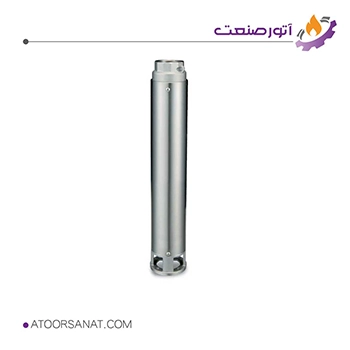
Features:
- Country of Origin: Italy
- Body Material: Cast iron
- Applications: Household connections, increasing system pressure in qanats, automatic distribution of non-corrosive fluids without sand or other solid impurities in small autoclave tanks.
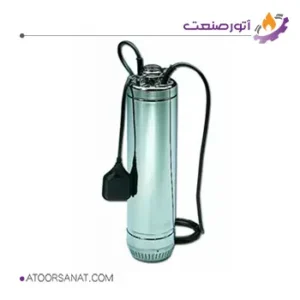
Features:
- Country of Origin: China
- Body Material: Cast iron
- Applications: Suitable for household water supply systems, transferring non-acidic fluids like water, and irrigation systems in agriculture and gardening.

Features:
- Country of Origin: Japan
- Body Material: Cast iron
- Applications: For water supply to office and commercial complexes, villas, small irrigation, fountains, water features, and more.
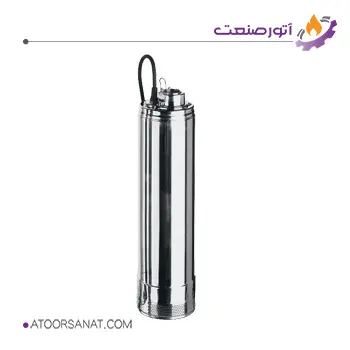
Features:
- Country of Origin: Italy
- Body Material: Cast iron
- Applications: Residential and small buildings with limited installation space.
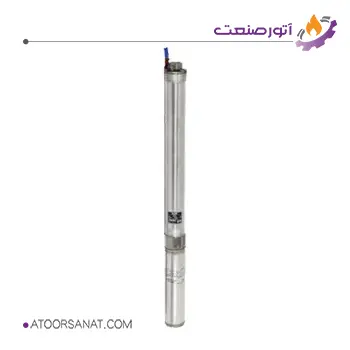
Features:
- Country of Origin: Italy
- Body Material: Cast iron
- Applications: Household water pumps, industrial and construction applications, irrigation, and more.

Features:
- Country of Origin: Italy
- Maximum Height: 60 bar
- Body Material: Cast iron
- Applications: For transferring water in household, industrial, and agricultural settings.
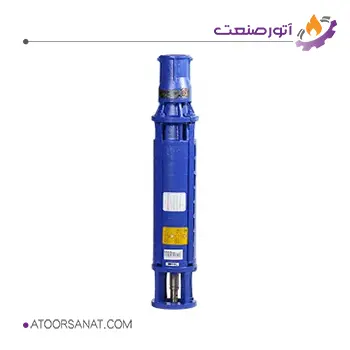
Features:
- Country of Origin: Italy
- Body Material: Cast iron
- Applications: Household water pumps, industrial and construction applications.
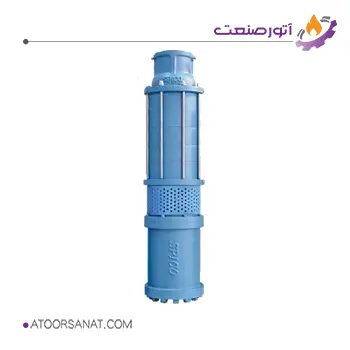
Features:
- Country of Origin: China
- Body Material: Cast iron
- Applications: For household use, fountains, booster pumps, office and commercial complexes, villa water supply, and more.
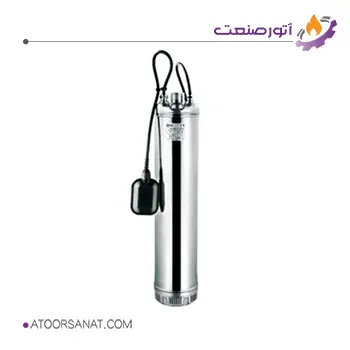
Features:
- Country of Origin: Italy
- Body Material: Cast iron
- Applications: Household water pumps, industrial and construction applications.
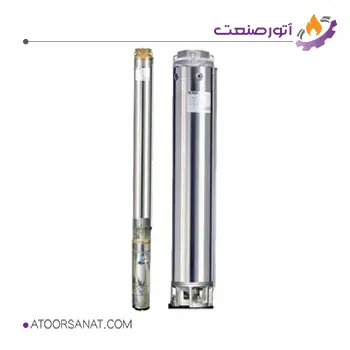
Features:
- Country of Origin: Iran
- Body Material: Cast iron
- Applications: For household and agricultural applications.

Features:
- Country of Origin: China
- Body Material: Cast iron
- Applications: For transferring water in households.

Features:
- Country of Origin: China
- Maximum Height: 30-45 meters
- Body Material: Cast iron
- Applications: For transferring water in household, industrial, and agricultural settings.

Features:
- Country of Origin: Iran
- Body Material: Cast iron
- Applications: Household water pumps, industrial and construction applications.

Features:
- Country of Origin: China
- Maximum Height: 33-66 meters
- Body Material: Cast iron
- Applications: For transferring water in household, industrial, and agricultural settings.

Features:
- Country of Origin: Iran
- Maximum Height: 5 meters
- Body Material: Cast iron
- Applications: Household water pumps, industrial and construction applications.
Types of Domestic water pumps and how they work
Pumps are generally classified into two categories: household and agricultural. Each of these categories has various types, including centrifugal, submersible, Grundfos, irrigation, and more. Domestic pumps are used to provide the necessary water for a building and do not have a high capacity. Due to widespread use, numerous designs have been developed for Domestic water pumps, some of which are more common. In the following, we will examine the operation of several of these pumps.
1- Centrifugal Pumps
A centrifugal pump is a mechanical device that transfers fluids using rotational energy. This energy is applied through one or more rotors, also called impellers or wheels. The fluid enters the pump through the impeller’s axis and is accelerated radially outward by centrifugal force, exiting through the impeller blades.
This action of the impeller increases the pressure and velocity of the fluid, directing it towards the outlet. The pump’s housing is designed to guide the fluid from the inlet to the impeller and then reduce its velocity before directing it to the outlet. The figure below shows a general view of a centrifugal pump.
The impeller is the main component of a centrifugal pump and consists of a series of curved blades typically positioned between two plates (in closed pumps). For fluids containing solid particles, open or semi-open pumps are more suitable.
The fluid enters the pump axially from the front of the impeller’s eye and is directed toward the impeller. At the back of the pump, the impeller is connected to the electric motor via a shaft, which rotates at high speeds (usually between 500 and 5000 RPM). There are two design options for the housing: volute and diffuser. The goal of both designs is to transfer the fluid to the outlet with controlled pressure. In reality, the exit velocity from the impeller is very high and not suitable for transfer.
For most applications, high pressure and moderate velocity are required; therefore, some of the kinetic energy must be converted into fluid pressure. Diffusers with fixed blades and volutes with variable cross-sections accomplish this. In a diffuser, as shown in the figure below, the fluid loses velocity by colliding with the blades, while its pressure increases according to Bernoulli’s equation.
The volute’s function differs from that of the diffuser. As shown in the figure below, the volute’s cross-sectional area increases as it approaches the outlet. With an increase in the cross-sectional area through which the fluid passes, according to the law of conservation of mass, the fluid’s velocity decreases, and its pressure increases.
The pressure increase in a diffuser is greater than that in a volute, and diffusers are always used to achieve high pressures. Conversely, pumps using volutes instead of diffusers have lower costs.
2- Self-Priming Regenerative Pumps
Regenerative pumps are centrifugal pumps used for pumping liquids. They have a high head but can only transfer a low flow rate.
If a pump is placed below the liquid level, gravity, and atmospheric pressure prevent air from continuously entering the pump or suction line. Pumps are typically used for transferring liquids, and moving air is a very difficult task for them. In many applications, such as emptying a tank, the pump must be placed above the water level. In these conditions, there is air at the inlet of the pipe when the pump starts to operate, and the pump must be able to remove or displace the existing air to transfer the liquid. There are different ways to do this.
Using a secondary pump can empty the pipeline of air, or a one-way valve and a tank can prevent the suction line from emptying, but these solutions require more equipment and piping. The best solution in such cases is to use a pump that can independently remove air from the suction line and start working; this type of pump is called a self-priming pump.
In a conventional centrifugal pump, there is no sealing between the inlet and outlet; therefore, this pump cannot be self-priming, and if the pump operates without liquid, it will heat up because the liquid acts as a cooling lubricant for the pump.
With some modifications, this pump can be converted into a self-priming pump. To make a pump self-priming, the impeller and volute are covered with a chamber so that there is always water inside this chamber. This water gives the pump the ability to start working and also cool down. After installation, the chamber must be completely filled with water. In a centrifugal pump, self-priming means that the pump can create a vacuum in the suction line with the liquid stored in the chamber.
The figure shows the states of a self-priming pump, which include:
- Starting
- Sucking air from the inlet
- Pumping liquid
- Turning off the pump
The operation of a self-priming centrifugal pump has two stages: suction and pumping.
In the suction mode, the liquid acts as a ring for the pump. The rotating impeller in the eye of the pump creates a vacuum, and this vacuum draws air into the pump. At the same time, the impeller creates a cylindrical ring of water inside the pump chamber, which creates a sealing against air that resists the return of air from the outlet into the pump. As the pump continues to operate, gas bubbles become trapped inside the liquid and are expelled through the path between the impeller blades. In this way, the air is removed and the liquid is sucked into the pump.
When the pump is turned off, the chamber is designed to retain enough liquid so that the pump can have enough water to start working again at another time. If the pump is not used for a long time, the chamber may become empty due to leakage or evaporation. In this case, the chamber must be refilled with water.
3- Jet Pumps
A jet pump utilizes a nozzle to accelerate the fluid, converting its pressure into high velocity. It’s a system for pumping fluids, consisting of two main parts:
- Surface Pumping Unit: Typically a centrifugal pump that transfers energy to the fluid, increasing its pressure.
- Submersible Jet Pump: The lower part, including the nozzle, throat, and diffuser.
The nozzle and throat are crucial components of a jet pump. Their area ratio determines the pump’s performance. Pumps with the same area ratio will have similar performance and efficiency.
Jet pumps operate based on the Venturi principle. In the surface unit, the fluid, after pumping, has high pressure and low velocity. As shown in the figure, this fluid has two paths: one portion flows towards the outlet, while another portion is directed towards the lower part and suction pipe. The fluid directed to the lower part is called the motive fluid and passes through a nozzle before entering the suction pipe. Due to the nozzle’s smaller cross-sectional area compared to the pipe, its velocity significantly increases.
Due to this increased velocity and Bernoulli’s principle, the fluid’s pressure drops significantly. Therefore, the nozzle outlet is a low-pressure zone. The figure shows that the incoming fluid moves towards this low-pressure area. After combining the motive and incoming fluids, both fluids pass through the throat. At this stage, the fluid has low pressure and high velocity, which can cause cavitation when entering the pump. To prevent this, a diffuser is used to reduce velocity and increase pressure.
The section between the nozzle and the throat regulates the fluid and determines the pump’s characteristics and cavitation potential.
4- Turbine Pumps
A turbine pump is a specialized type of centrifugal pump that utilizes a turbine-shaped impeller with radial blades to transfer fluid. It’s also known as a vortex pump, peripheral pump, or regenerative pump. Turbine pumps combine the high pressure of positive displacement or multi-stage centrifugal pumps with the smooth operation of centrifugal pumps.
Similar to most centrifugal pumps, the flow rate of a turbine pump remains relatively constant despite pressure changes. This makes it suitable for applications requiring high pressure and low flow rates, making it ideal for Domestic water pumps.
A turbine pump is a dynamic pump, meaning it uses the momentum and velocity of the fluid to increase its pressure. The primary difference between turbine and centrifugal pumps lies in the impeller design. Turbine pumps have a smaller diameter impeller with more blades that guide the fluid from the inlet to the outlet.
In a turbine pump, unlike centrifugal pumps where the fluid enters axially, the fluid enters the impeller radially from its edge. The centrifugal force propels the fluid towards the casing, but upon contact, it returns to the impeller blades. This process repeats, increasing the fluid’s energy with each iteration. This repeated action achieves a similar result to using multi-stage pumps, enabling high pressure levels.
As shown in the diagram, the fluid pressure increases from the inlet to the outlet, and unlike centrifugal pumps, the fluid only passes through the pump once.
5- Submersible Pumps
A submersible pump is a type of centrifugal pump with a modified design. It can float on water and perform pumping operations. The electric motor in this pump is located inside the casing and is directly connected to the impeller. The entire casing is sealed, allowing the pump to be submerged underwater. The diffuser blades have also been replaced with a volute, resulting in a lower output pressure compared to a conventional centrifugal pump.
6- Pressure Booster Pumps
A pressure booster pump is a type of centrifugal pump designed to provide sufficient pressure to transfer fluid to a specific point under various conditions. It operates with other pumps and cannot transfer fluid independently. Its primary function is to increase the pressure of the fluid being transferred. Its structure resembles a fan and works with an expansion chamber.
The pressure booster pump transfers liquid into the chamber, which also contains air. As the liquid is transferred, the air is compressed, increasing the chamber’s pressure. This elevated pressure results in the pumped-out water having higher pressure.
Components of a Domestic Pump
Despite the existence of various types of Domestic water pumps, the centrifugal pump is the primary component in all of them. In this section, we will examine the components that make up this pump.
- Pulley: The pulley is designed to transfer power from the electric motor to the pump via a belt. Given the significant force it must withstand, pulleys are typically made from durable materials like steel or cast iron.
- Spindle Bearing: This component is located after the pulley. It receives rotational force from the pulley and transmits it to the next component, the impeller. The design and build quality of this bearing are crucial factors in determining the pump’s lifespan.
- Casing: The casing is the primary structure that houses the components and fluid. It must withstand forces from the components and fluid pressure, so it must be made of a durable material. High-quality pumps use aluminum for the casing, but cast iron can be used to reduce the overall cost of the pump.
- Seal: Since bearings are made of metal balls, they are susceptible to corrosion. Therefore, this component must be protected from any contact with the fluid. The pump seal is designed for this purpose. Any leakage can lead to component corrosion and prevent the pump from generating sufficient pressure, ultimately causing pump failure.
- Impeller: The impeller is designed to create head and pressure in the pump. In other words, the impeller is the heart of the pump, and without it, the other components would be useless. The efficiency, performance, pressure, and head of the pump are determined by the design parameters of the impeller, such as its inner diameter, outer diameter, number of blades, inlet angle, outlet angle, blade thickness, and fluid velocity at the inlet and outlet. For small pumps that transfer very low flow rates, the impeller is made of plastic, while for other cases, it is made of metals like cast iron, aluminum, or stainless steel.

